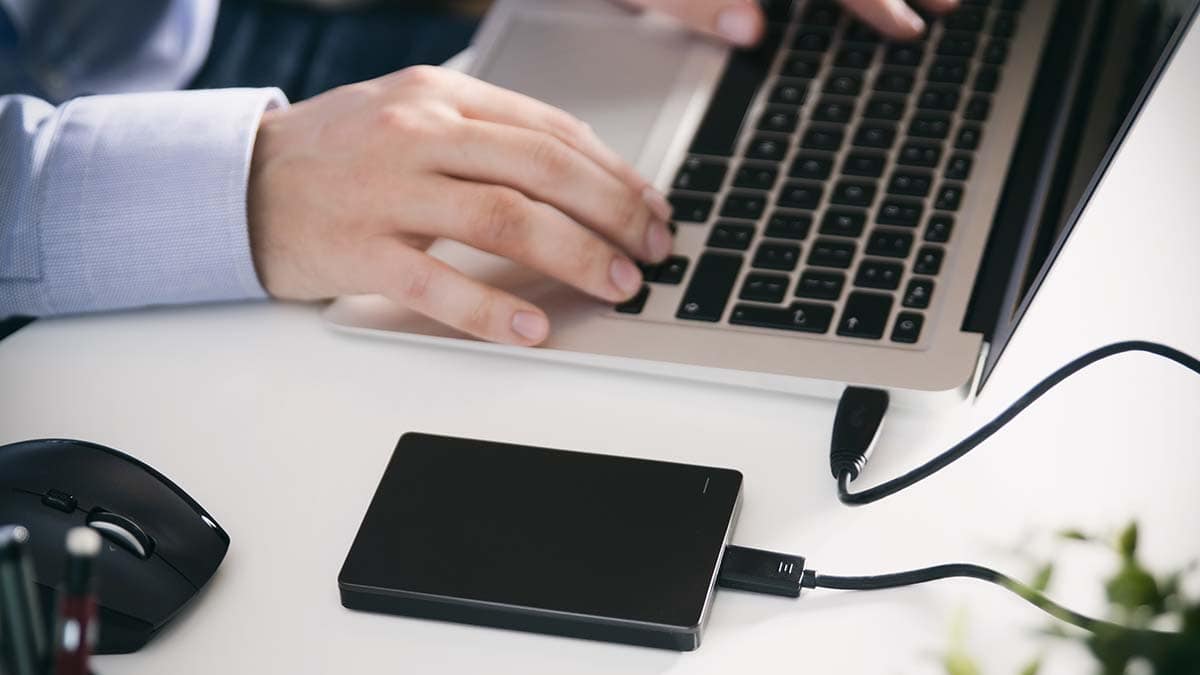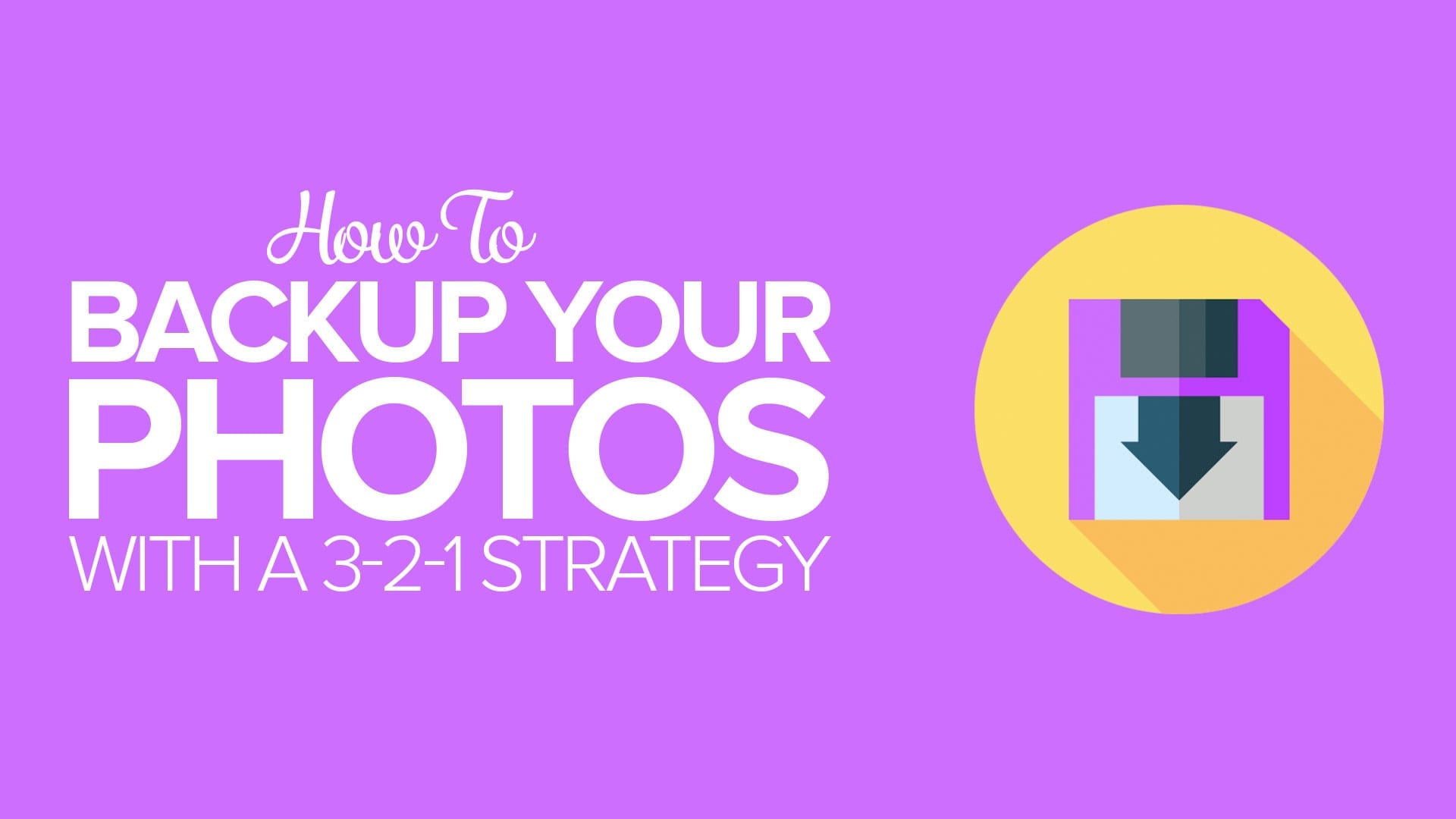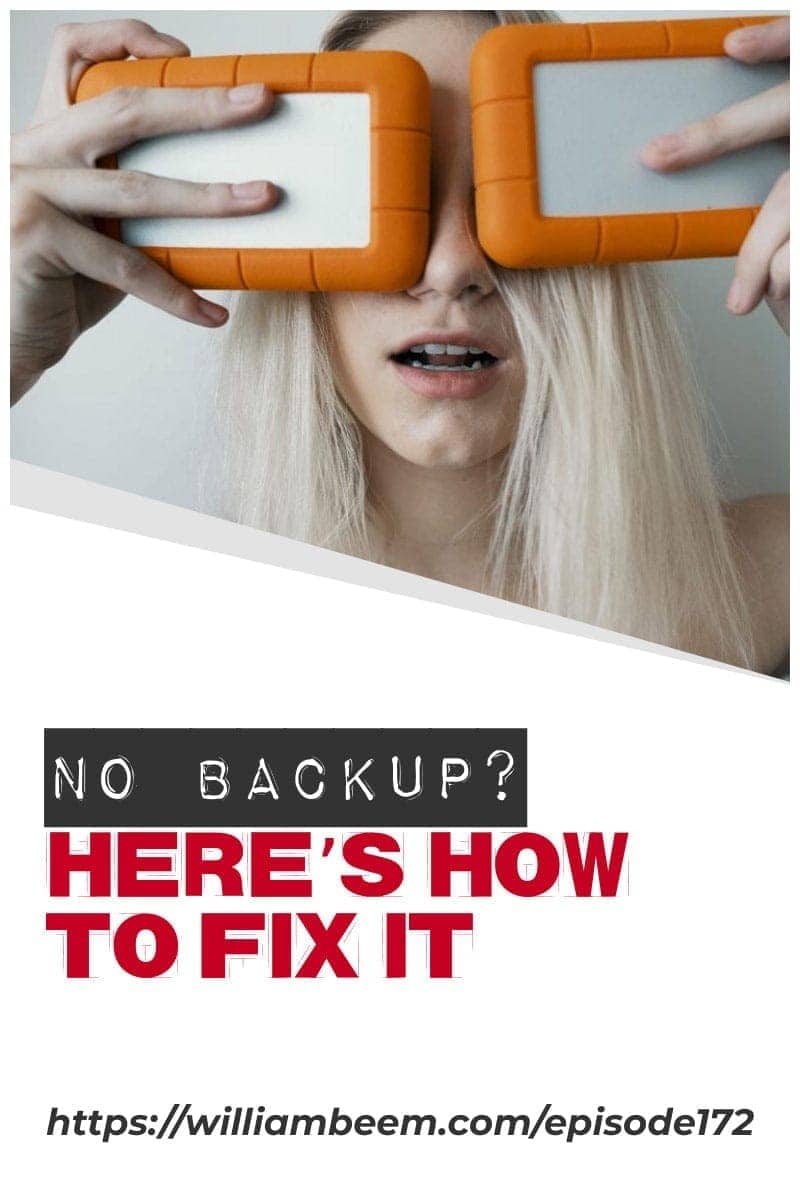Affiliate Disclosure: We earn a commission if you purchase through one of our links at no additional cost to you.
If you don’t have a system to backup your photos, then your photos are at risk.
That’s because every drive – mechanical and solid state – will ultimately fail. It’s OK, you can get years of use out of a drive with normal use. However, the clock starts ticking from the first moment you power up the drive.
That’s why we’ll talk about how to back up and protect your photos – so you’re covered when bad things eventually happen.
What Could Possibly Go Wrong?
Hard drive failure is just one of the things that could – excuse me, will – go wrong. It’s inevitable, but by no means is hard drive failure the only way you can lose your data.
I use a RAID 5 array to store my data. That’s not a backup method but rather a way to protect yourself from the failure of a single hard drive. All drives work together as one logical drive, striping the data across all drives. There’s also information that tells the RAID array how to rebuild the data if one of the drives fail.
Ideally, you remove the faulty drive, plug in a new one, and the RAID system rebuilds your data as if nothing happened. No need to restore from a backup.
Except what do you do if the RAID enclosure itself fails?
That’s what happened to me. The RAID enclosure I used had a proprietary chip with the program for the RAID system. To be fair, all RAID systems use a proprietary software system – often on a chip or logic board – to turn a bunch of individual drives into a logical unit.
The problem I experienced is that the vendor no longer made my kind of enclosure or the chip that made it work. I had four perfectly functional drives, but each one was rendered useless because the enclosure failed, and there was no replacement. RAID may be a common concept, but each vendor has their method of making it work.
That enclosure was the single point of failure for all of my data.
I was lucky. The vendor was able to send me another enclosure but also warned me that those chips were no longer manufactured. My data used a proprietary format that was no longer being produced. It was a matter of time until I could no longer recover my primary data repository.
Ultimately, I had to switch RAID systems and protect myself from another proprietary failure. RAID is not a way to back up your photos.
What Is a 3-2-1 Strategy to Backup Your Photos?
The idea behind a 3-2-1 backup strategy is pretty simple.
Those files are your working copies if you’re working on files without a backup strategy. That’s the data you touch, process, and manipulate on your computer.
The second copy is your local backup. If something goes wrong and you lose your working copy, you can quickly restore it from your local backup and then keep on working.
The third copy is off-site. That means it’s away from your house, office, or whatever location where you keep your first two copies. You still have your data protected in case of a catastrophic event where you work on your computer.
What is a catastrophic event?
I live in Florida, so hurricanes are rather catastrophic. They could rip off your roof and flood the interior of your house. Computers and water are not good bedfellows. If you live in an area prone to earthquakes, tornadoes or angry people with sledge hammers who hate computers, there’s a small chance you could have a catastrophic event.
Even if you don’t live near any of those events, a good old-fashioned fire will destroy your computer and data, leaving you with a catastrophic loss.
Do not underestimate the need for an off-site location to back up your photos.
How Do I Backup Your Photos with a 3-2-1 Strategy?
Since there are many products that you can use to create a 3-2-1 backup strategy, I’ll let you know what I did. Then you’ll see how truly paranoid about backs I am.
1: Create Your Working Space
The first copy is where you store the files that you need to use in processing. For many people, that’s the drive inside your computer.
You may want to think about using some external drives, though. The method I use is to store my Operating System (OS) and application files on the Internal drive. That’s typically a very fast drive, like a Solid State Drive (SSD).
The thing about SSD is that they are still more expensive than mechanical hard drives, so they often have less space on the drive. That’s OK, though.
Your computer needs to access the OS and your applications more often than it needs your data. It makes sense to keep those frequently used files on a fast drive. Then you keep your data on another drive system.
The benefit here is that your computer can access both drive systems simultaneously. If you have one drive with everything on it, then the drive head can only read one spot at a time. Not the most efficient use of time or technology.
With multiple drive heads, each operates and accesses data without waiting on the other drives to complete a task. By avoiding the One Big Drive option, you gain speed and efficiency, not to mention the protection provided by the separation of drives.
Also, remember that external drives are often victims of the data transport bus used to ferry the bits from the drive to the computer. That used to be a big problem. Now with USB-C or Thunderbolt 3, you can really pump data rather quickly from the drive to the CPU.
2: Create Your Local Backup Space

This is pretty simple, yet some people still get it wrong.
When you make a backup of your data to protect it in case of a drive failure, please do not store your backup on the same drive as your working space data. It defeats the primary purpose of the backup.
You lose your working and local backup space if that drive fails.
It seems obvious, I know. Yet I’ve seen this on so many systems that I felt it was important to call it out as a bad strategy. Yes, this will work if you delete a file and need to restore it from your back. It’s not totally useless unless your drive fails.
Remember the first thing I told you? All drives will fail.
You want to get a completely separate drive unit for your local backup. If you’re as paranoid as I am, you may even want to get a couple of drives mirrored together. That helps alleviate the problem of your local backup drive failing, which blows away your local source to back up your photos.
3: Choose Your Local Backup Software
Here’s the important concept for your backup software.
You want to retain generations of your file backups.
That means each generation was a point in time when you saved the file. That’s because backups can also protect you from mistakes. Maybe you didn’t lose a file, but you deleted some important data. Maybe you overwrote the file with something else in a moment of confusion.
Worse, maybe you didn’t realize that until after you made a backup.
If you only have one generation of file backup, then you’re out of luck. Restoring the file restores the mistake. However, imagine you have multiple generations to go back in time and recover the file as needed.
For Mac Users, that’s the big concept behind Time Machine that’s built-in to macOS. However, you can find this feature in other backup software. Whatever you decide to use, ensure you can keep your files’ generations.
Sounds like that could eat up a lot of disk space, right?
It could, except for another important feature – compression.
That allows you to store your data in backup using much less space than the original, uncompressed working files. Here’s an example.
My main working space is a 4-bay RAID 5 array that provides 12 TB of space. Yet my backup drive is only 8 TB, with room left over. Compression allows me to have multiple versions of my files using less space. It’s slower to access compressed files, but you don’t need or want to access them.
You’re either backing up or restoring files through your backup software interface.
There are other benefits to backup software, including encryption and security options and other important things.
4: Make Sure You Create Alerts
You want backup software that can send you alerts. Not a lot of them, but there are times when the backup software ought to let you know that something isn’t right.
One of the alerts I like to receive is if the backup hasn’t run in a while. Another alert you want to know about is if the backup disk is full or offline. Simple tools like Time Machine have very limited alerts.
Also, how does the software tell you that you haven’t performed a backup if the software isn’t running?
To do that, you need a service outside your computer that monitors your conditions. That’s something I get from my online software backup service.
How to Get Off-Site Copies of Your Backup
I was an IT Director some years ago and decided to use my office as my off-site backup location. That meant having a couple of different drive enclosures that I rotated between my home and office.
This system works but has a couple of problems.
The first problem is that you have to remember to rotate your backup drives. I hate to admit it, but I forgot to swap those drives more than once.
The second problem is that your off-site backup is only as good as when you take it away. The longer it goes without being updated, the less valuable it is if you have to use it for a major recovery. It’ll still get most of your data, but you may lose some of your recent work.
A couple of years ago, I decided to use an online service. After researching, I decided that Crashplan for Small Business was my best option. Crashplan provides software for both local and online backups. As part of that service, I receive alerts if my backups aren’t running.
Click here to get a Free Trial for CrashPlan for Small Business
It happens. Maybe the software doesn’t get started or gets accidentally shut down. If I don’t have a backup in a couple of days (that duration is something you can configure), I’ll receive an email alert. You want to know if your system will not backup your photos.
When uploading your data files to an online service like Crashplan, be prepared to leave your computer on for a long time. Mine is on 24/7 anyway, so it’s always available to upload a backup or save locally.
When I started this up, I had 4 TB of data to upload and a 150 MBps upload threshold. If conditions were perfect, it should’ve taken 20+ days to upload.
Of course, the conditions weren’t perfect. It took several months to upload all of my data.
Part of the problem was that files didn’t deliver to Crashplan at 150 MBps. Things go through the Internet at varying speeds; some people get traffic faster than others. Maybe Crashplan had a LOT of other backups going on, and couldn’t accept my data at full speed.
Another problem was due to the amount of data I had to send. The Crashplan app uses your local RAM as part of the service. The more data you want to store, the more RAM you have to allocate to Crashplan. My data amount well exceeded the typical configuration. So that meant my upload effectively stopped for a while.
I had to contact Crashplan support, and then I learned how to configure their app for my amount of data. Keep that in mind. More data to upload means more RAM to use for a cache.
Once everything is uploaded, it’s been perfect bliss. No more driving backups to and from an office (which I no longer have). All it has to do is upload the changes, which happens in the background for me.
Should the unthinkable occur, my data is safely stored outside of the danger zone. Of course, that’s as long as I keep paying for the service. It’s worth it to me, and I consider it part of the cost of doing business.
Free Online Storage Alternatives to Backup Your Photos
In my opinion, these services are dangerous. Beware of the terms of service to see how or if they may use your photographs. While you always maintain copyright, some services make it a part of their contract that you grant them an irrevocable license to use your photos as they wish, including the possibility of sharing with 3rd party services.
For some businesses. this is only to protect them because they need the right to use your photos to provide a service to you. However, some will use your photos for advertising, scraping metadata, or gathering information about you.
Worse, they may compress or otherwise alter your photos. The photo you download from a free service may not be the same quality that you uploaded. They may change their rules or completely disappear (like Google+ did).
Not everyone needs or wants a system like the 3-2-1 photo backup I just described. My wife is perfectly content to maintain a paid Flickr account and uploads her finished JPEGS to store in private albums. That also allows her to share photos easily with family overseas.
SmugMug is not only a portfolio showcase, but it also allows you to store unlimited RAW files. It integrates with Lightroom and other programs, so it’s easy to use. It’s not free, but it won’t break the bank.
Imagine having a safe place for your photos, including RAW files.
SmugMug is a safe, beautiful home for all your photos. You have unlimited storage for your photos at full resolution, create your photo website and sell your photos online. You can use the free desktop and mobile apps to manage your galleries, and there's always real human support 24/7.
Your Photos Are as Safe as Your Backup Strategy
I’m a backup and data protection freak. That’s partly because of my IT background; I’ve been on the edge of disaster more than once. My backups have backups. I even have a backup for my lunch money because I wouldn’t say I like to miss out on food.
When something is valuable, you do your best to protect it. So backup your photos.









